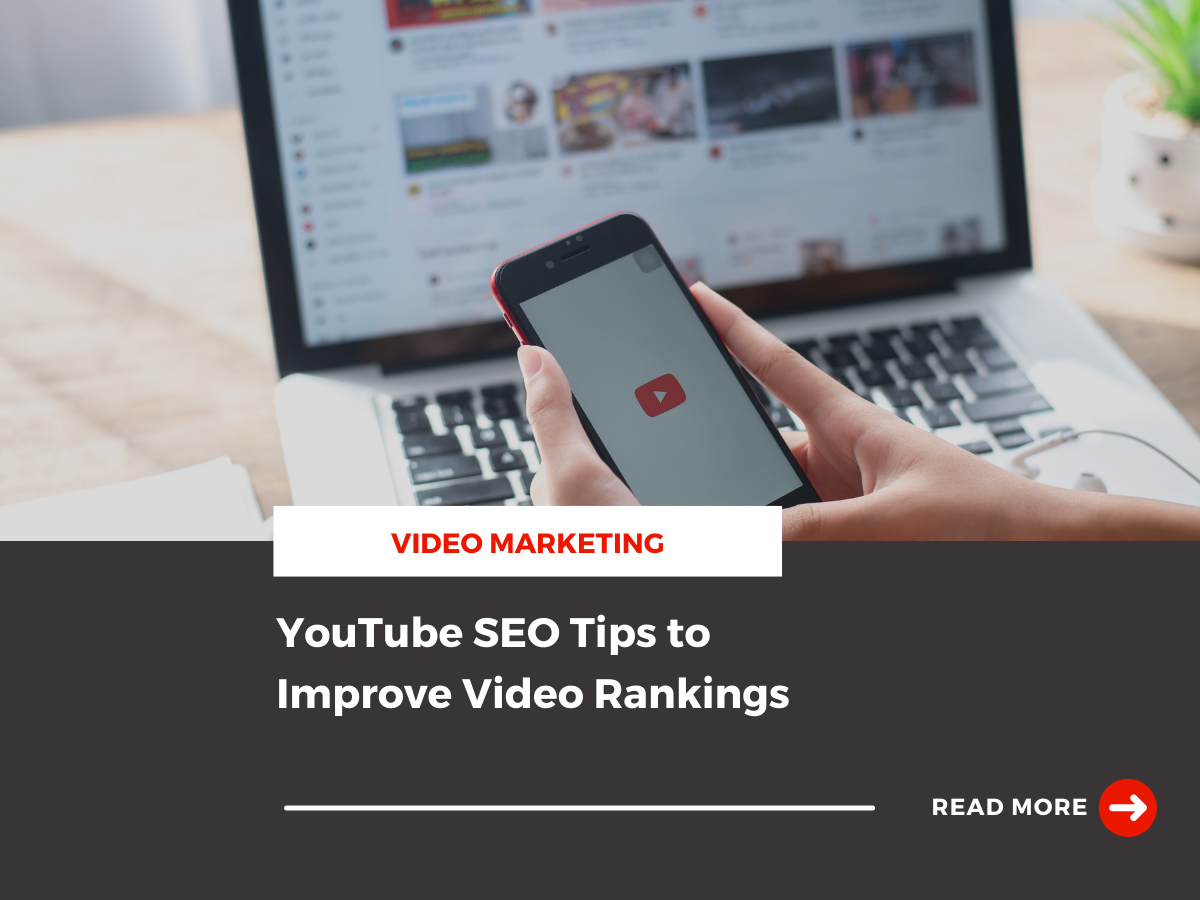YouTube search engine optimization refers to the strategies used to get a YouTube video to rank higher in search results. Search engine optimization (SEO) is the strategy of tailoring your online content to rank higher in search engine results to increase your traffic and develop a larger following. Although it may not be often thought of as one, YouTube is a very powerful search engine as users frequently search the site for informational and entertaining content. As its own search engine, YouTube has its own factors that influence which content gets ranked high in search results and which content is left behind.
What Is SEO on YouTube and How Important Is It?
With millions of videos on YouTube, developing content that will stand out is challenging. Fortunately, like other search engines, YouTube has a set of parameters by which it decides to rank content. To rank high and increase the chances of your video gaining exposure, you should follow several steps that will make your content more appealing to the algorithm. Considering SEO with every YouTube video is crucial to reaching a new following and creating a larger audience. Since there are likely hundreds of other videos discussing a topic similar to yours, you need to work to set yourself apart.
YouTube SEO Tips to Improve Your Video Rankings
You may already have a strong understanding of SEO for popular search engines like Google or Bing, but that does not mean this understanding will directly translate to YouTube. Although certain principles hold true for SEO in general, YouTube is its own platform with its own algorithm, so you should develop a strong understanding of its preferences to increase your chances for success. Taking the following steps will help you step up your YouTube optimization.
1. Research Video Keywords
Like other search engines, keywords play a significant role in ranking content on YouTube. Therefore, to improve your chances of having content ranked, you should use targeted and well-researched keywords to increase your search result standings. However, popular search terms and keywords on YouTube will differ from those on Google. For example, “how to” is an extremely common search term on the site.
To determine which keywords you should highlight in your video and title, you should consider starting with a Google search of terms in your area of expertise. Try different combinations of keywords until you find one that ranks a YouTube video on the first page. Google SEO for YouTube videos can give you some great insight into what others are looking for. There are also a variety of tools available to assist you in your keyword research that can inform you what keywords are commonly searched and how often.
2. Choose an Optimized Video Title
Similar to choosing an optimized page header on your website, you should strive to do the same for your YouTube optimization. A clear, concise and targeted title will give you a strong advantage in search rankings. When choosing a title for your video, you should incorporate your researched keyword and provide a short description of what the video offers so that viewers know what they will get out of it by watching.
For example, a title that reads “How to Change Your Car Oil in Five Steps” tells a viewer exactly what they will learn in the video. These strategies should also extend into the video description. A clear, concise and keyword-focused description will help boost your video in search result rankings.
3. Take Advantage of Video Tags
Much like other social media platforms, YouTube has fully embraced hashtags to help viewers follow along with specific topics and trends. Incorporating hashtags into your video is a great way to increase your potential for ranking in search results. YouTube now includes hashtags above the video’s title as hyperlinks to connect with other videos listing the same topic tags. When choosing hashtags, be sure that they are relevant to your video and accurately reflect the content you are discussing so that viewers continue to engage with your video once they click on it.
4. Encourage Subscriptions
If you watch YouTube videos fairly regularly, you have probably noticed that content creators make it a point to tell viewers to subscribe to their channel. This is very purposeful and done for good reason. The YouTube algorithm heavily weighs channel subscriptions when ranking videos. For the algorithm, the amount of people that have signed up to see your content on a regular basis is a good sign that you are providing valuable, engaging content. In addition, likes and comments on your videos will also demonstrate engagement and offer a benefit to your rankings.
5. Choose an Engaging Thumbnail
The algorithm will not change your video’s rankings based on the thumbnail you choose; however, an enticing thumbnail can still have a direct impact on your video’s SEO. A good thumbnail will encourage more viewers to click your video, and more views will show the algorithm that your video is receiving engagement and deserves to be ranked higher. Since a thumbnail is the first impression that a potential viewer will get from your video, you should focus special attention on choosing a good one.
6. Incorporate Accurate Closed Captions
Accurate closed captions on your video provide multiple benefits, including making your video accessible to a much wider audience, from the hearing impaired to those watching a video on mute in a public space. Closed captions are also helpful for SEO. Because bots are not able to watch your video, they rely on text to analyze the content of your video and rank it appropriately. Therefore, any opportunity to add text to your video is beneficial for SEO purposes, especially if the text includes the researched keyword and other potential search terms. However, it is essential that the closed captioning is accurate.
YouTube offers automatic transcriptions that provide automatic captions to videos, but they are not always accurate, can be confusing for those that read them and can ultimately harm your search rankings. Accurate captions that adequately incorporate key terms spoken throughout your video will ultimately improve your rankings.
7. Monitor Your Video Analytics
One of YouTube’s best features is its analytics feature. YouTube offers creators multiple analytics reports that allow you to track your engagement and channel performance. Some of the most helpful metrics that the reports offer include watch time, subscriber growth, click-through rate and traffic sources. The first two metrics are self-explanatory, while click-through rate refers to the rate at which people click on your video once it appears on their page and traffic sources reflect how viewers found your video.
Studying and analyzing these metrics and finding the right KPIs for your business is the best way to determine whether or not your current SEO strategy is bringing in the right traffic and conversions. For example, if you see a drop off in subscriber growth after releasing specific videos, it may indicate that they are not reaching a wide audience. These reports can ultimately help you tailor and adapt your conversion rate strategy as you work to grow your channel.
Start Growing Your YouTube Channel Today
Following these tips is a great first step toward strengthening your YouTube video rankings. To learn more about improving your SEO for YouTube videos and optimizing the rest of your online content for SEO, contact Kanbar Digital. We strive to help our clients strengthen their online presence and expand their reach to new clients and consumers. Contact us today to discuss your needs and develop a plan to boost your views on YouTube.




